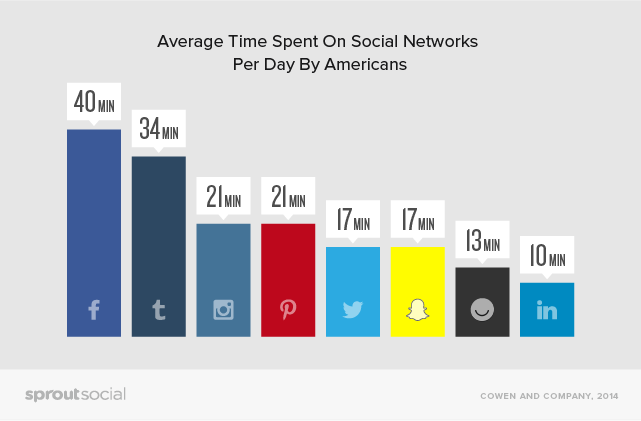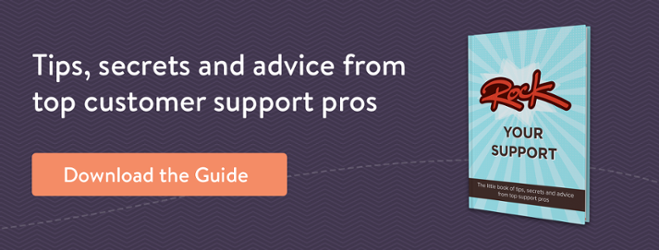Businesses are defined by what their customers say about them.
And as social media platforms like Twitter and Facebook have risen up to the mainstream, and mobile internet and smartphone usage has boomed, customers have become much more connected.
Now customer service experiences can not only make or break relationships with current customers, but thousands of potential new ones too.
Today I’d love to share with you how the rise of the connected customer has changed how social customer experiences are shaped and how to best deal with customer service in this new age.
Let’s get started.
How social media is transforming customer service and the customer experience
A decade or so ago, before social media exploded, there were only a small number of communication lines between brands and customers. Oftentimes, if you wanted to get in touch with a company you’d open up your email or pick up the phone.
Now, customers are far more connected to both brands and each other.
In the US alone, the average adult spends just under three hours on social media per day – with a combined 57 minutes being spent on just Facebook and Twitter as the below graphic from Sprout Social shows how social media is transforming customer service and the customer experience:

With so much of our time being spent on social media sites, it’s no surprise that many of us now turn to these channels when we want to engage with brands, businesses and each other.
The traditional notion of ‘being online’ often evokes thoughts of a desktop or laptop computer. But for many of us, the reality of ‘online’ is now much different. Along with social media’s rapid growth, the use of smartphones, tablets and mobile internet has also grown massively.
Wifi is more readily available outside of the home and internet networks (3G/4G) are also improving, meaning that customers are always connected to the internet – never more than a click or two away from contacting any brand.
With customers able to connect 24/7 the expectations have grown, and responses are not only expected on their chosen platforms but around the clock too.
Word of mouth and social customer experience
Customer experiences have always been shared, both positive and negative. And the way we react to customer service hasn’t changed. What has changed is our ability to share the experience.
Before social media broke into the mainstream, we’d only share experiences with small groups of friends and family in conversation. Maybe a more avid internet user would head to a forum. But our message would very rarely spread beyond a very small, close knit group.
Now, instead of sharing experiences in one-to-one conversations, customers are able to broadcast their experience to many via social networks. This makes every customer experience an opportunity for both positive and negative word of mouth.
According to Pew research half of all adult Facebook users have over 200 friends. With such a large network, one positive or negative experience can now trigger an effect that spreads far beyond close friendships circles.
A study from American Express found that 46% of respondents said they always tell others when they’ve had good service interactions and even more people (60%) are likely to share their bad experiences with others.
How connectivity has affected expectations
Being connected 24/7 across platforms has lead to a rise in customer expectations. People now expect to get a response almost immediately on the same channel they used to contact a brand.
People are no longer willing to wait for answers or be passed from one channel to another (Twitter to email, for example). It’s expected that brands should be able to respond to an email, tweet or Facebook post almost in realtime.
And in a best case scenario, customers should have no need to reach out to the company and have their questions answered within the product itself or on the website’s FAQ section.
As I touched on at the start of this section, connectivity has increased customer expectations when it comes to response time. In the dial-up days, before constant connectivity, it wasn’t unusual to wait 24 or even 48 hours for a response on a customer service issue.
Connected customers expect much faster responses. In fact, 42% of people expect a reply from a brand in an hour or under. This means you need to have the correct workflows in place to quickly and effectively manage customer communication across a myriad of channels.
It also used to be that we’d compare companies within the same industry: “X telecom company has faster customer service that Y.”
But a connected customer’s expectations are much higher across the board. You’re no longer just trying to provide better, more personalised and empowering customer service that other companies in your niche.
You’re competing against every company your customer has ever dealt with, and your customer will hold you to the standards of best-in-class companies.
This takes its toll on your support team too. With the increase in channels, support teams have come under increasing pressure to provide this level of support to customers.
In fact, 73% of support professionals find managing time and workload to be the most challenging part of their role – which is only set to increase as customer expectations get higher if companies do not take steps to address the growing demand.
How to communicate with connected customers
No matter what the platform, customers expect the same kind of service. The only thing that changes with each platform (Facebook, Twitter, email, phone call) is the medium in which you deliver the message.
When dealing with social media customers it’s important to respond – and where possible solve – their issue on their chosen platform of communication.
For example, if a customer sends a tweet, a phone call follow up may not make complete sense and will force the customer away from their chosen channel. Every instance of channel switching increases effort for the customer, which in turn leads to disloyalty.
A study done by the CEB, a customer insight and loyalty best practice firm, found that customers who are forced to pick up the phone to solve their issue after first having tried to solve it online are 10% more disloyal than customers who were able to resolve their issue in their channel of first choice.
Today companies need to be aware that customers expect replies on a number of different channels and must be prepared to step up their game in order to deliver on the heightened expectations of connected customers.
How companies can improve the social experience for the customer
Zappos’ CEO Tony Hsieh once called his company a “service company that happens to sell shoes.”
This sentiment is echoed by Laurie Meacham, Customer Commitment Manager at JetBlue Airways, who said “We call ourselves a customer service company that happens to fly planes.”
Meacham continued: “We want our employees to engage smartly, and for the conversations to be organic and natural. We look for opportunities to add value and connect with our customers, not just respond to every single mention that comes our way.”
This customer centric approach helps companies like JetBlue and Zappos delight connected customers across every platform.
Here’s one great example of how JetBlue put the customer first:
A man named Alex tweeted at JetBlue asking about their standby policy — namely, why he would be charged $50 for getting on an earlier flight than the one he was ticketed for. Within three minutes, JetBlue had replied.
Not only did JetBlue reply to his tweet but they organised for a representative at Boston’s Logan Airport to locate Alex and follow up personally.
Okay, reason # one million @JetBlue is the best. Saw my tweets & chatted with me in the terminal. #customerservice pic.twitter.com/7HYtXiAa1Z
— Alex Silberman (@asilbs) January 28, 2014
The personal follow-up is amazing here from JetBlue, but before that it was key that JetBlue were willing (and able) to respond to the customer’s initial message on their chosen platform in a timely manner.
This is quite a contrast to another case study where British Airways were slow to address an issue on Twitter which escalated extremely quickly, due to the fact that the airline did not offer 24/7 customer service on Twitter.
@HVSVN Sorry for the delay in responding, our twitter feed is open 0900-1700 GMT. Please DM your baggage ref and we’ll look into this.
— British Airways (@British_Airways) September 3, 2013
Not only did this reveal that the airline failed to consider the expectations of the connected customer, but it led to more unhappy customers sharing their bad experiences with British Airways on the platform.
The importance of social media in customer experiences
Providing great customer service is something that every company can do. In order to deal with the expectations of connected customers and excel in customer service, companies must be prepared to jump into conversations on the platforms their customers are active on and provide service where the customer is, rather than expecting the customer to come to them.
The companies who are willing to engage with the connected customer across various social channels in a timely, effective manner will be the winners and leave any later-adopting companies in their wake.

